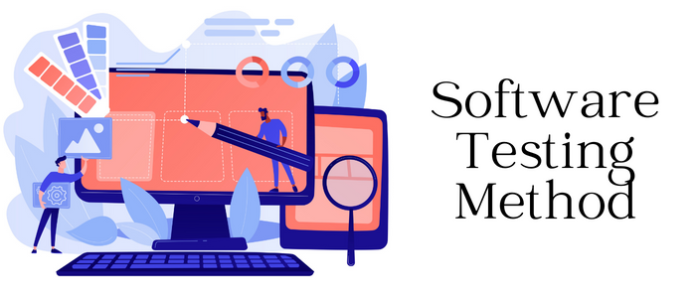Following the development of the software, testing is crucial. The testing team must approve all software before it can be released for production. Various testing methods are employed to deliver a successful product or application. Software development methodologies, including testing, must change to keep up with the rapid pace of technological progress. Software testing must be effective and efficient because software updates are occurring more often.
Software development requires the use of software testing techniques. It aids programmers in addressing various bugs. These defects might be anything from a misplaced semicolon to a crucial business necessity, as we are all aware. Software testing hence becomes crucial in a test-driven development environment.
The age of process automation is upon us. Businesses today rely on a variety of software packages. Software quality is therefore very important. Thus, there is a rise in the need for reliable software.
In software testing, effectiveness and efficiency are important factors. The relative ability of a testing technique to uncover software bugs is known as test effectiveness. The relative cost of discovering a bug in the programme being tested is known as test efficiency. The length of testing is one of the main issues facing the software business. Time costs money, therefore, the entire procedure is expensive. Reduced manual testing time and the number of test cases created for a given system are therefore important to lower testing costs.
IMPORTANT ASPECTS OF SOFTWARE TESTING:
In software testing, effectiveness and efficiency are important factors. The relative ability of a testing technique to uncover software bugs is known as test effectiveness. The relative cost of discovering a bug in the programme being tested is known as test efficiency. The length of testing is one of the main issues facing the software business. Time costs money, therefore, the entire procedure is expensive. Reduced manual testing time and the number of test cases created for a given system are therefore important to lower testing costs.
Who Conducts Tests?
Unlike their smaller equivalents, which might only have one tester, large IT organizations typically have their test team. Some businesses employ outside software testers or contract the testing process out. The testers must assess the software against the specifications. When conducting unit testing, developers and testers may occasionally test each component individually. Before the entire system has been developed, unit testing can be done. The people listed below are involved in system testing
- End User
- Project Manager
- Software Tester
- Software Developer
Who Conducts Tests?
Unlike their smaller equivalents, which might only have one tester, large IT organizations typically have their test team. Some businesses employ outside software testers or contract the testing process out. The testers must assess the software against the specifications. When conducting unit testing, developers and testers may occasionally test each component individually. The people listed below are involved in system testing
- End User
- Project Manager
- Software Tester
- Software Developer
When Should Testing Stop?
One of the most challenging questions for a test engineer is this one. Here are a few typical pointers for determining when to end testing:
- All critical bugs have been resolved
- There aren’t enough bugs being discovered
- There is no more money for testing
- The project’s time frame has been met
- The project’s risk is below an acceptable threshold.
WHAT ARE THE EFFICIENT SOFTWARE TESTING METHODS?
Now let us dive deep into different forms, types, and levels of Software Testing as it was quite wide as well as understandable. Software testing involves both verifications, a type of static testing, and validation, a type of dynamic testing.
Verification
Verification ensures that the product is made to provide the customer with all functionalities. Verification occurs at the very beginning of the development process. Examine documents, plans, codes, standards, and specifications, it also involves meetings, walkthroughs, inspections, etc. It provides an answer to queries like, “Am I constructing the product correctly?” Am I properly using the given data (in the appropriate location as well as the manner)?
Validation
The goal of validation is to ascertain whether the system complies with the specifications, carries out the tasks for which it is designed, and satisfies user requirements in addition to the organization’s objectives. Once all the process of verification is done, the process of validation occurs at the end of the complete development phase of the software. It provides an answer to queries like, “Am I creating the proper product?” Am I utilizing the correct data? (to capture such data which makes sense and ultimately fulfils the requirement of the end-users)
Now let’s explore the efficient software testing techniques that are currently most often employed.
A) White Box Testing
The fundamental idea behind white box testing is that testers already understand how the software functions. Its key objective is to understand how the software ought to function. After that, try it to make sure it functions properly.
The inner workings or architecture of a programme are tested during white-box or “glass-box” testing. It is sometimes referred to as a “structure-based technique” since in this case, testers must understand how the programme is put into use. In contrast to black-box testing, white-box testing focuses on how the programme accomplishes the task.
White Box Testing Methodologies Comprise:
- Coverage of Statement: This feature looks at every programming statement.
- Coverage of Branch: Runs several tests to make sure that each branch is thoroughly tested.
- Coverage of Path: Test all potential paths to cover every statement and branch.
White Box Testing Helps to Discover the Following Types of Errors:
- Error in logic involving controls, conditions, or functions that are part of the design and implementation process.
- Design mistakes brought on by a mismatch between the program’s logical flow and the actual environment.
- Syntactic mistakes and typos.
B) Black Box Testing
Black box testing is one of the most frequently used software testing techniques. It is, as the name implies, similar to considering the software as a black box. Software is treated as a “black box” with inputs and outputs in black-box testing. The tester just knows what the software is intended to accomplish; they are unaware of how it performs it. As a result, it is also known as input/output driven testing techniques or specification-based testing techniques. Black box methods comprise:
- State Models
- Decision Tables
- Analysis of Boundary Value
- Partitioning equivalently
- Testing of Domain
C) Scripted Box Testing
In scripted testing, the tester adheres to an outline, also referred to as a script. Given that it contains test cases and the related test processes, this script is crucial to the testing methodology. These actions are indeed scripted and suited for completing given criteria. Both functional and non-functional testing benefit from scripted box testing.
D) Visual (GUI)
The practice of evaluating a product’s graphical user interface to make sure it complies with its stated requirements is known as GUI testing. The sizes and alignments of images and buttons are typically tested in this manner when creating web pages.
MANUAL TESTING VS AUTOMATED TESTING:
MANUAL TESTING
Software developers can uncover software bugs by manually running tests and comparing expected and actual results. This approach is known as manual testing. These manual tests simply include the tester running the application in end-user mode and evaluating if it behaves appropriately.
Although human judgment can make this procedure less accurate, it can also be an advantage. When there is a scarcity of the number of testers, and you have a big enough project in hand then it is a problematic scenario. Such kind of bottlenecks in the project always leaves the testers frustrated and many of the issues remain unaddressed which makes the app unsuccessful.
- Tools for automating software are pricey. Manual testing has substantially lower immediate costs.
- You can instantly examine the results of manual testing. Automatic tests need additional setup time and might require running the entire set of tests before the results are displayed.
- More adaptable than automated tools are manual tests.
AUTOMATED TESTING
Automated testing is the process by which automated testing tools carry out tests that repeatedly carry out predetermined operations, comparing the anticipated and actual results of developing software. Your project is likely to act appropriately and bug-free if the program’s expectations and results line up.
Testers are permitted to record the automation process in this instance, enabling them to repeat and carry out identical testing tasks.
- Efficiently and rapidly runs tests
- Long-term cost-effectiveness is possible
- Everyone can view the outcomes
- Constantly having to fill out the same forms might be annoying. However, test automation addresses this issue.
- When a project is huge (i.e., there are many inputs/configurations), there are numerous system users, or when filling out forms, automated testing is more appropriate.
CONCLUSION:
The world of software testing is constantly changing. whether the domain, method, or technology. Choosing a suitable testing methodology is therefore not a simple process. In addition, there are many things to think about while putting such methods into practice. These include the software product’s schedule and business requirements.
One or more software development and testing approaches are an option. However, to deliver adaptable and effective finished goods that meet the objectives of the client, you will need advanced tools.
















